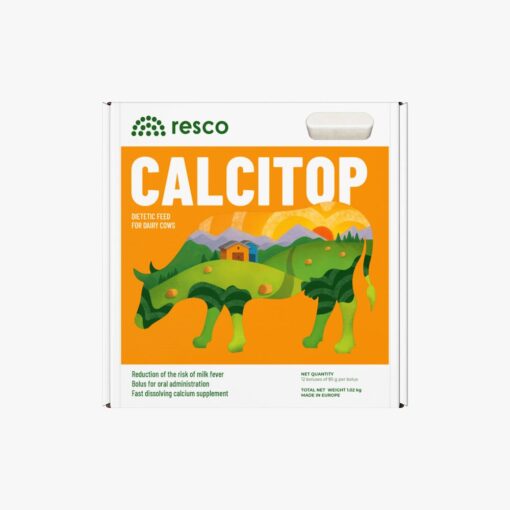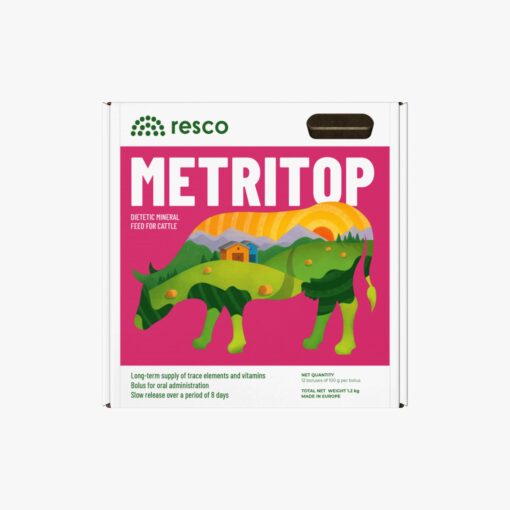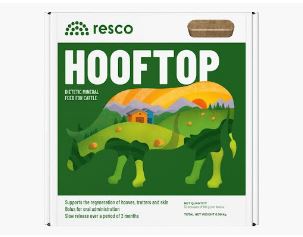
Ketotop is a combination of 2 boluses designed as prevention of ketosis in cattle (acetonemia) on four different levels.
Ketosis
Ketosis is a metabolic disorder that occurs mainly in high-yielding cows and when cows have recently calved. It easily develops in cows that receive insufficient energy in their rations. In addition to the shortage of energy, a poorly functioning liver also plays a role in the development of ketosis. Ketotop prevents ketosis, and in this way we want to change farming into Stressless Farming.
Prevention on four levels
- LIVER PROTECTION: rumen protected ingredients can reach the liver. They detoxicate the liver and stimulate bile production, enhancing the digestion of fat.
- RUMEN STIMULATION: enhancing the rumen flora, thus leading to a better fermentation and an optimal energy production in the rumen.
- INCREASED FEED INTAKE: the herbal extracts stimulate the cow’s appetite.
- EXTRA ENERGY: Ketotop contains fast and easily available energy.
PREVENTION OF KETOSIS
NO PRODUCTION LOSS
LOWER RISK ON SECONDARY DISEASES
QUICK RELEASE TIME AND 2 BOLUSES IN 1 APPLICATOR
Benefits
HEALTHIER COWS
LOWERS THE NEED FOR MEDICINES
INCREASES REVENUE
Ketotop trial
57 cows (with similar parity, age, physical health and feed) of a big Chinese dairy group were divided into a Ketotop group and a control group. The oxtail blood was collected in the four weeks after calving to determine the BHBA in the blood of all cows in the two groups and to determine if the cows had subclinical ketosis, clinical ketosis or no ketosis. No cows developed clinical ketosis, showing the great management practices of this farm. Subclinical ketosis however was more than halved in the Ketotop group.

When to use
- Ketotop is specially recommended for cows with a high body condition score (fat cows) and for cows with a low appetite.
- 2 boluses 10 days before calving, and 2 boluses immediately after calving.
Additional measures to prevent ketosis
ENERGY – Mix a total ration that contains enough energy so the high-yielding cow does not need to use her body fat.
ROUGHAGE – Ensure that the ration contains sufficient roughage with a good structure.
FEED – Avoid sudden feed shortages.
FEED CHANGES – Make sure that there are no rapid changes in the feed that result in disturbances in the fermentation of the feed taken in.
EXERCISE – Ensure that the animals get sufficient exercise.




